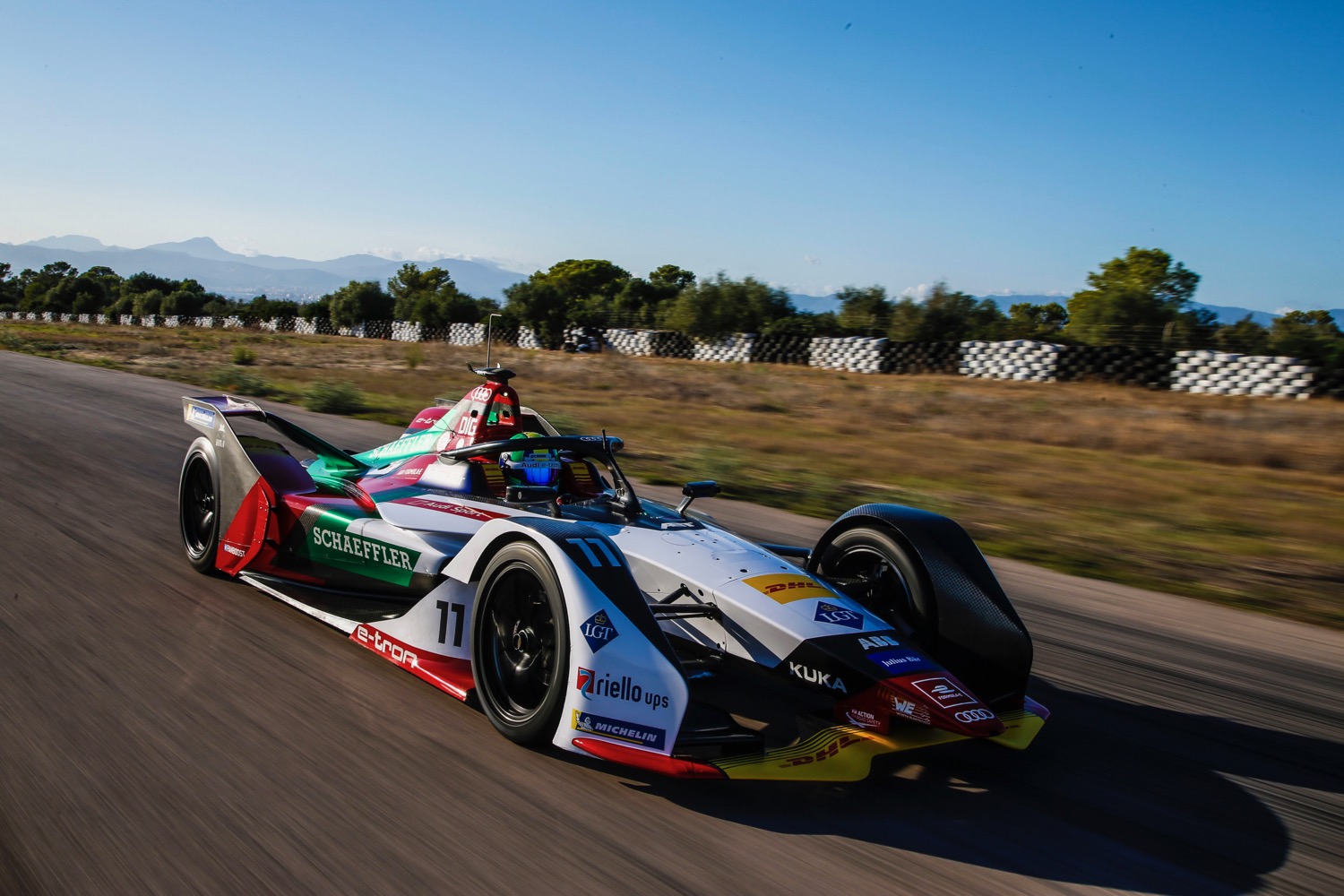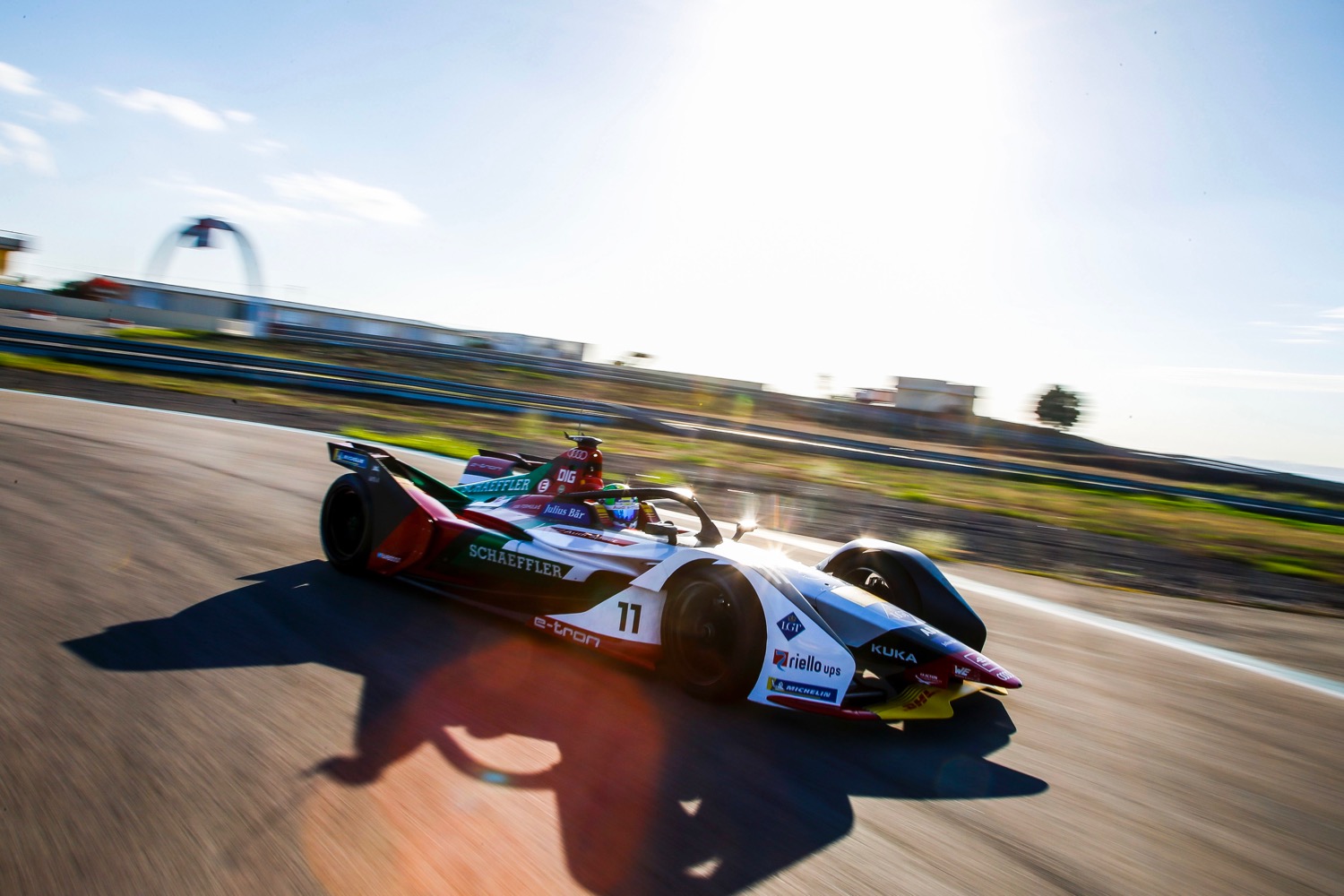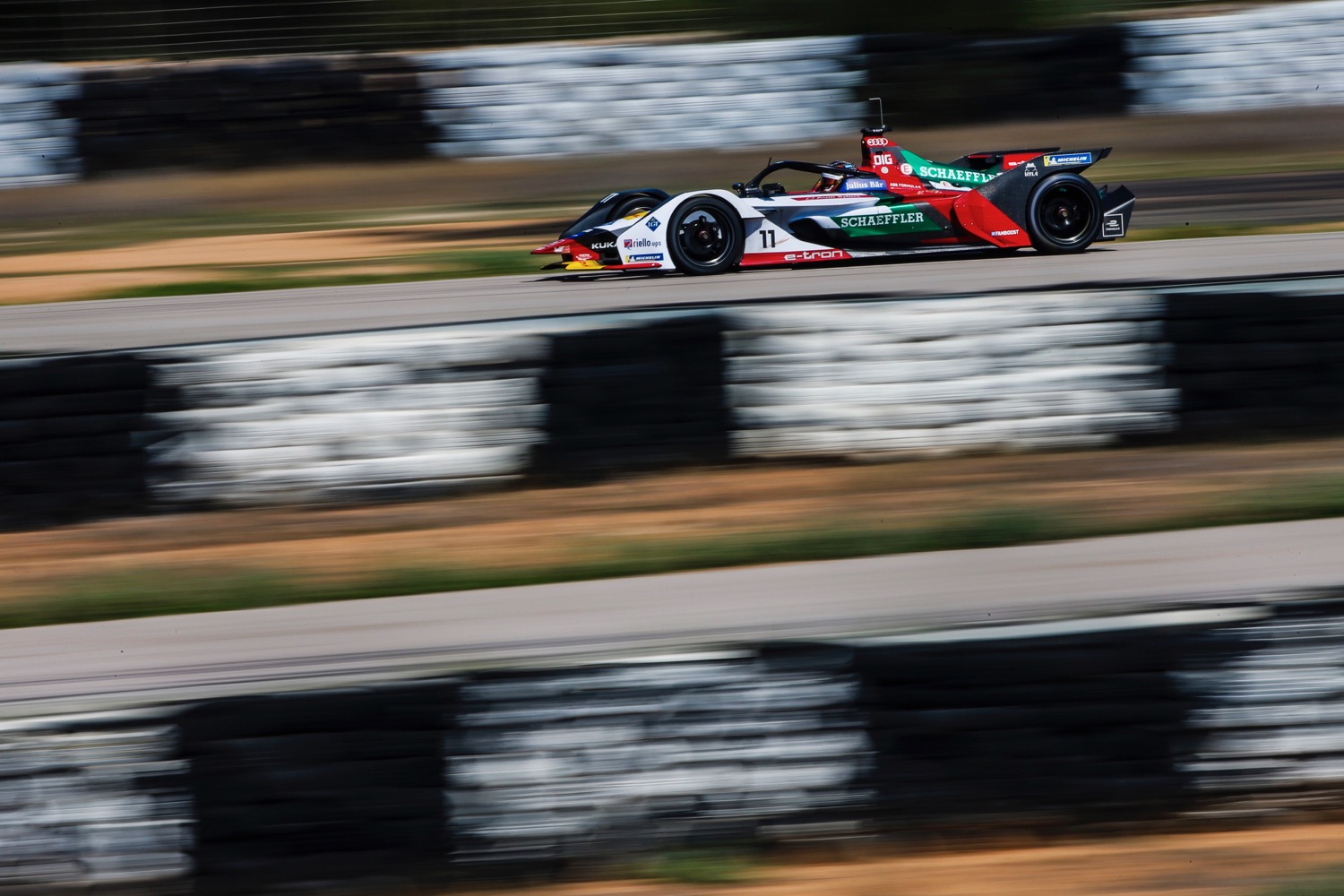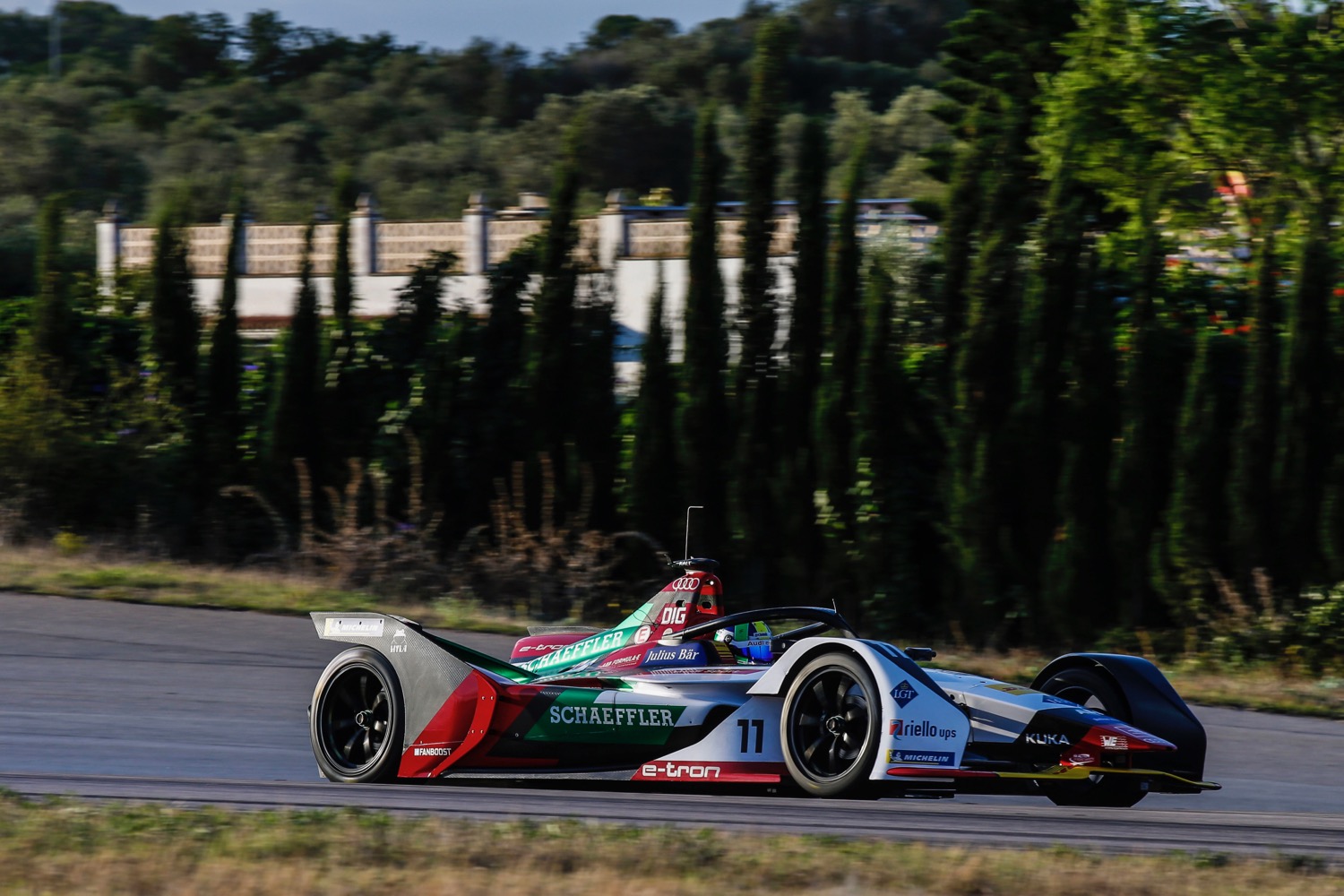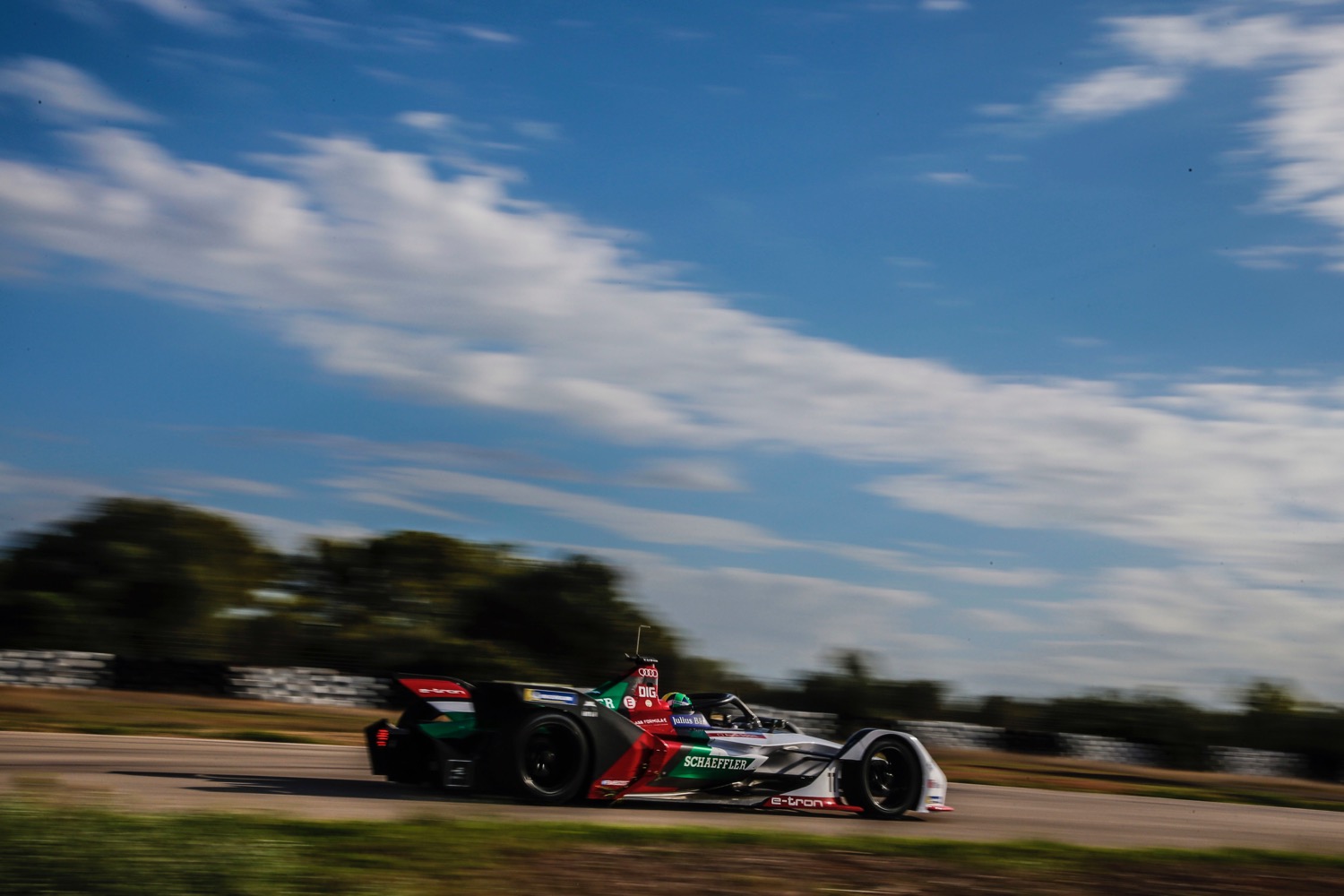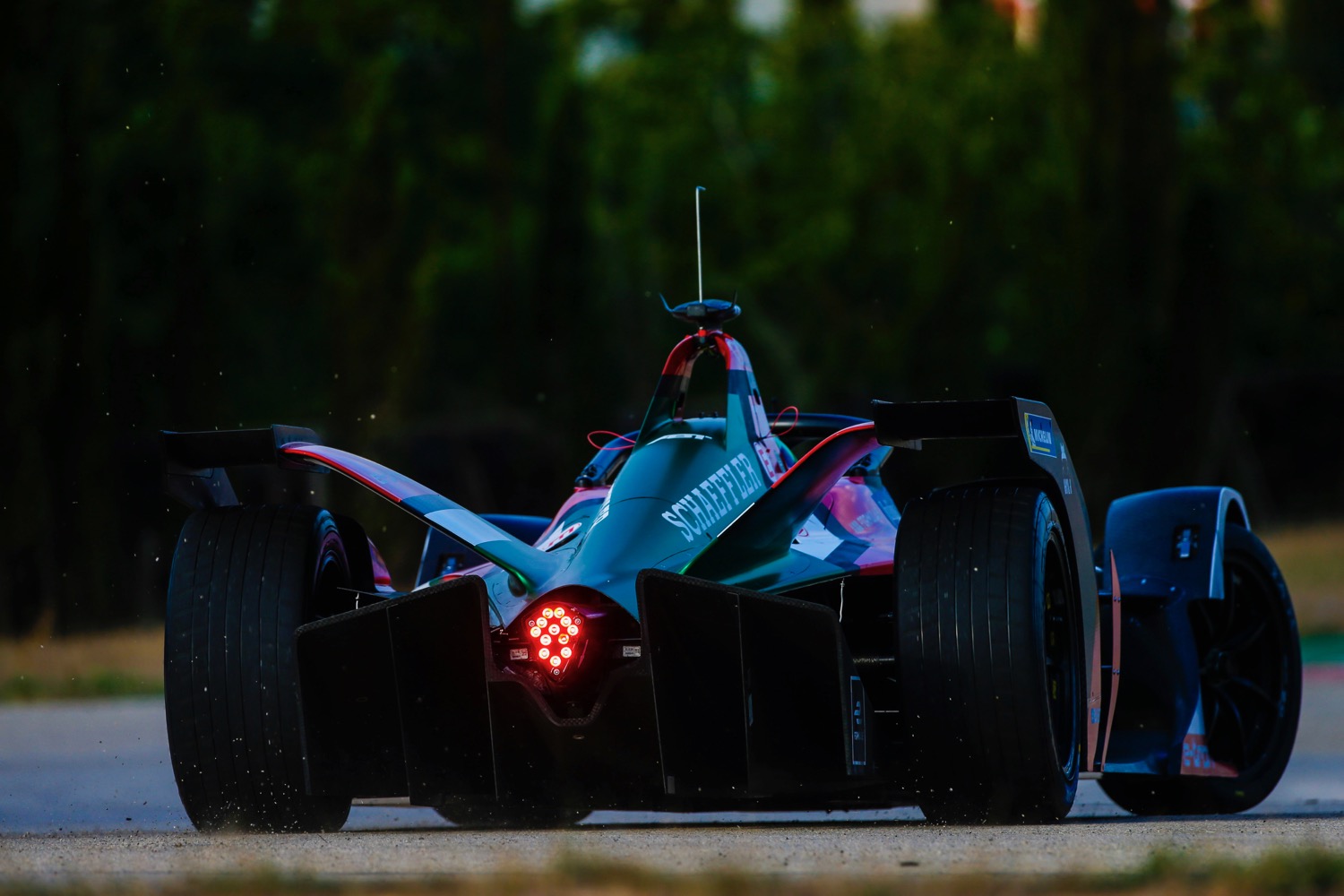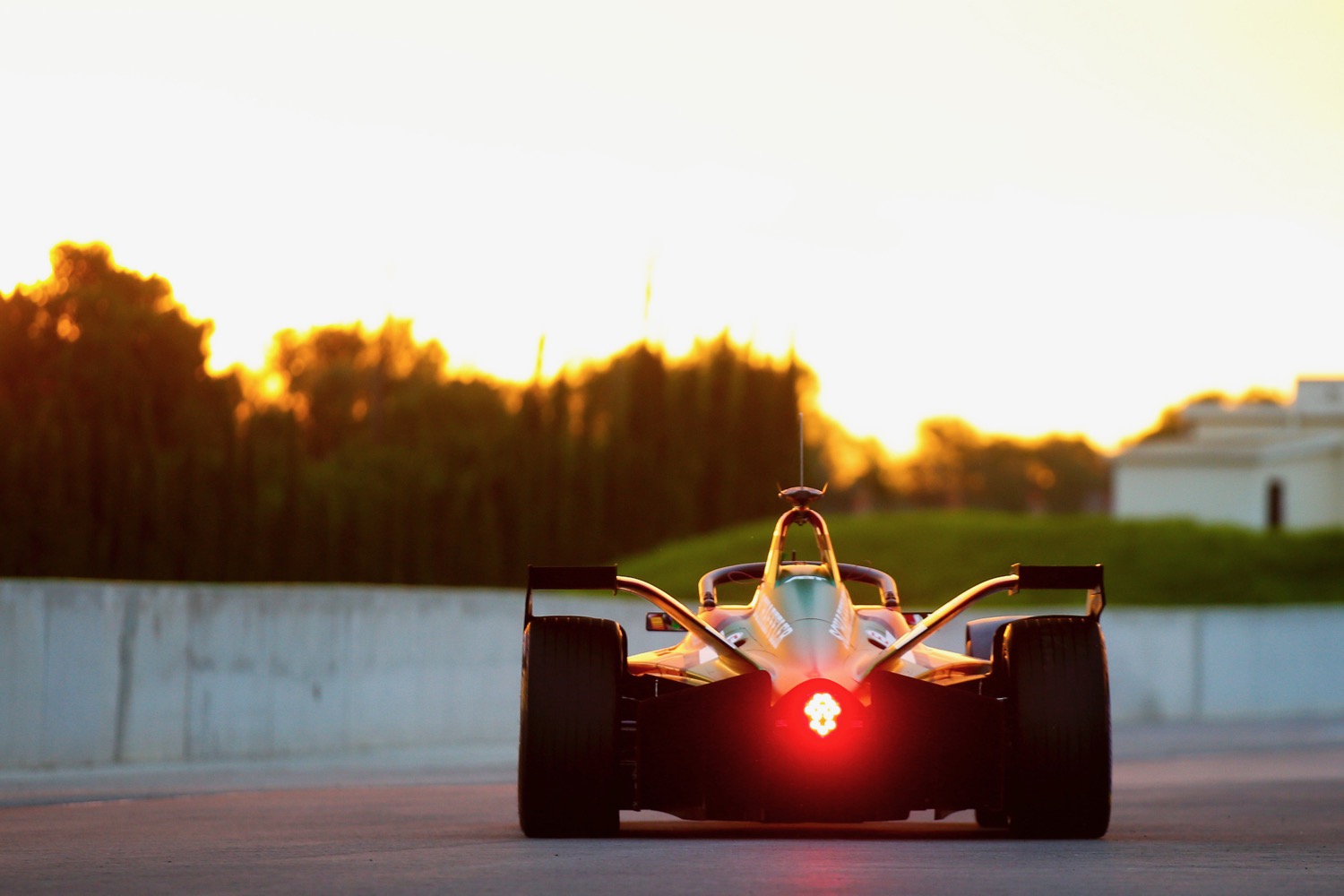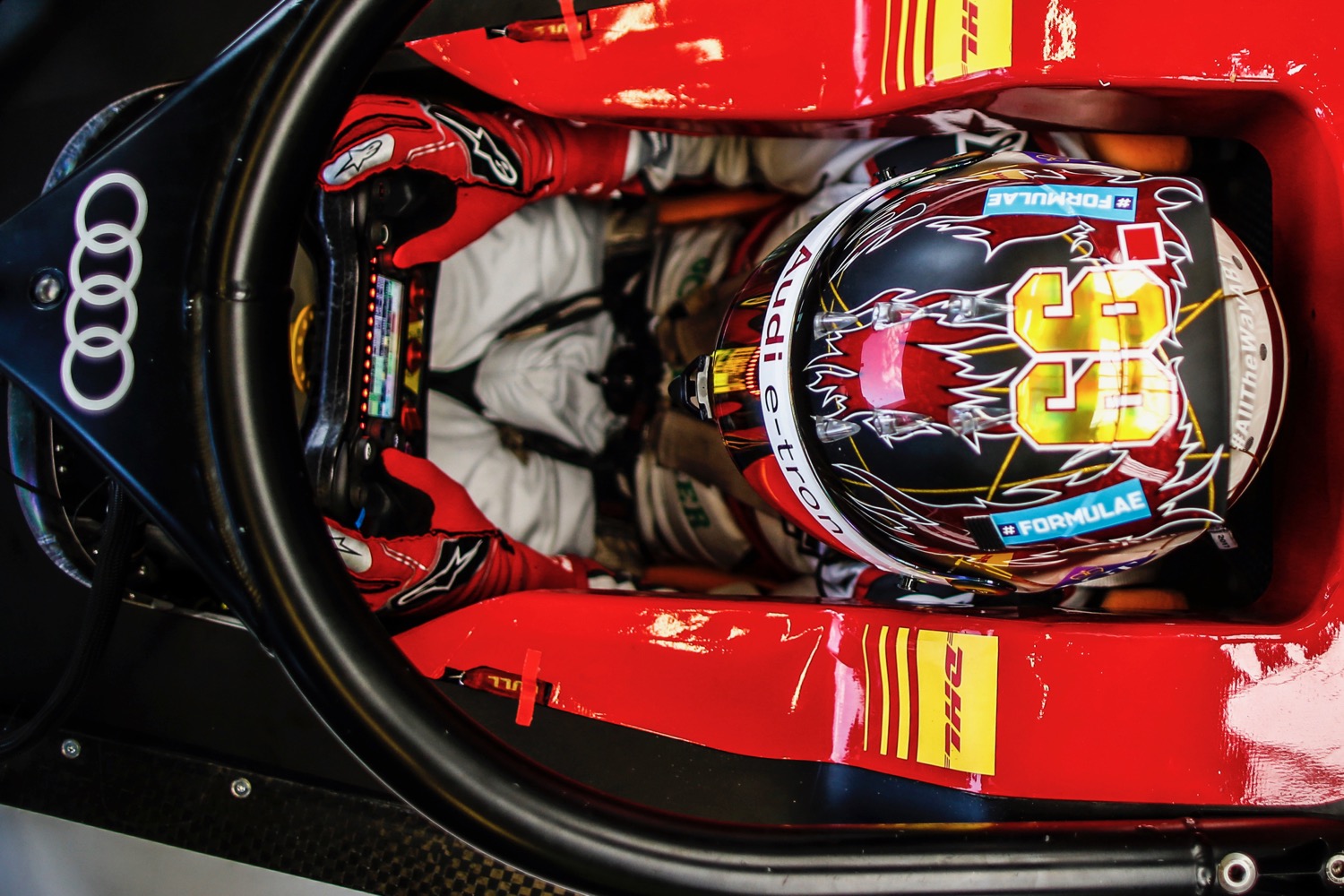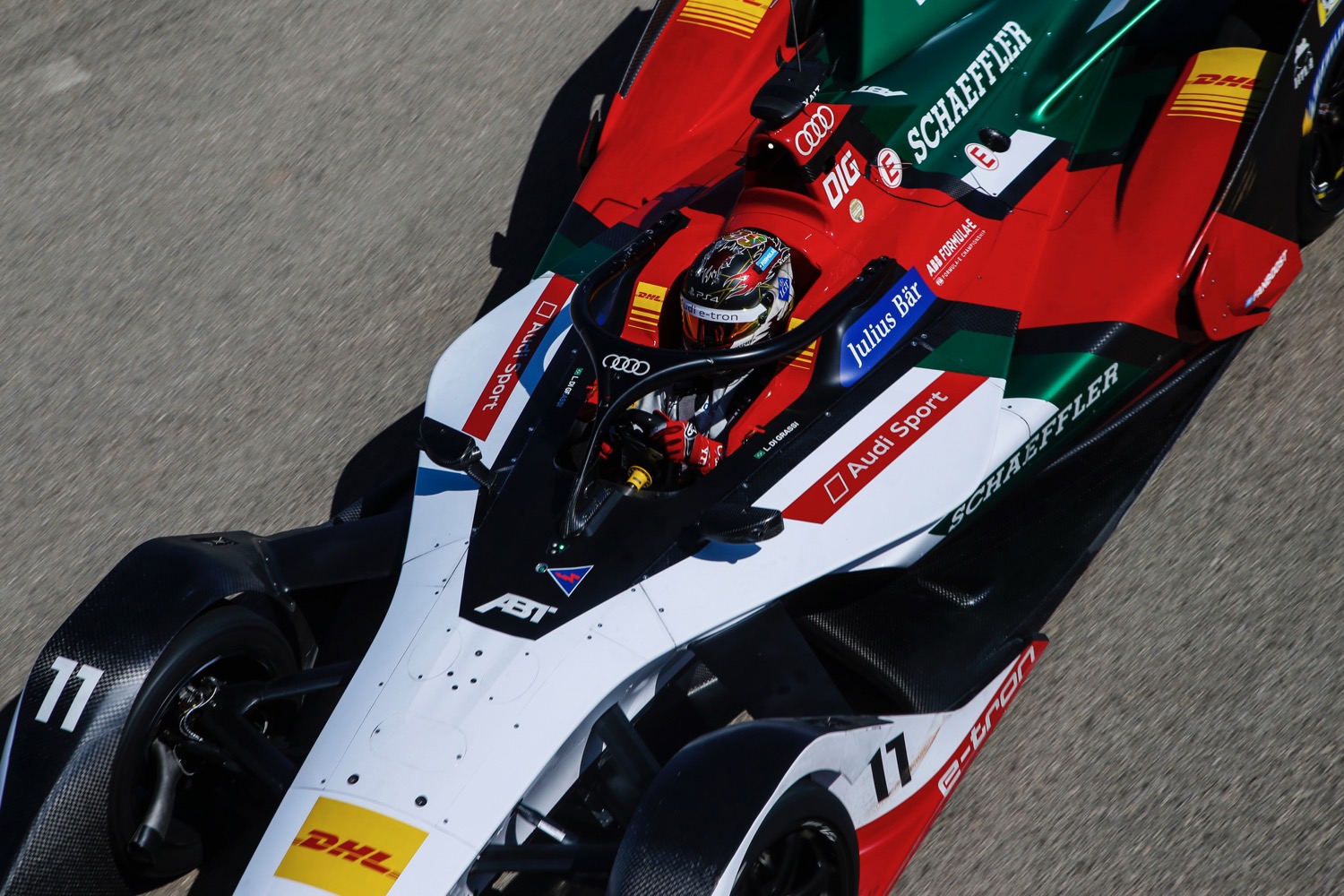Shortly after introducing its first production electric car, Audi unveiled its latest race car for the all-electric Formula E series. The Audi e-tron FE05 uses the same “Gen2” design used by all other teams, and hits the track for the first time December 15.
Besides an identical chassis, all Formula E cars use the same 52-kilowatt-hour lithium battery pack. The pack can hold enough charge to last an entire 45-minute race, eliminating the car changes used in the previous four seasons of Formula E. Watching drivers swap cars in the middle of a race was entertaining, but it didn’t make a strong case for electric powertrain technology.
The rules also dictate the amount of power cars can send to their rear wheels, with different power outputs for different situations. In qualifying, cars can run up to 250 kilowatts (350 horsepower), but they’re restricted to 200 kW (268 hp) for most of the race. However, drivers can briefly access 225 kW (306 hp) in specific places on the track called “activation zones.” Fans can also vote online to give their favorite drivers a “fan boost,” granting temporary access to the maximum 350 hp.
The e-tron FE05 will do 0 to 62 mph in 3.1 seconds and reach a top speed of 149 mph, according to Audi. It weighs just 1,984 pounds with the driver, as mandated by the Formula E rules. While the rules are designed to create a level playing field, teams are allowed to design their own electric motors and other components. Audi hopes to gain an advantage by achieving greater efficiency with its in-house motor design. But any advantage will be shared with Virgin Racing, an arm of Richard Branson’s Virgin Group that will be running the e-tron FE05s alongside the Audi factory team this year.
Because the cars don’t rely as heavily on aerodynamic downforce for performance (they don’t even have traditional rear-wing spoilers), designers were able to focus on making them look cool. However, one concession to practicality is the so-called “halo,” a ring around the cockpit meant to protect the driver’s head. It’s also used in Formula One.
The next Formula E season kicks off December 15 in Ad Diriyah, Saudi Arabia, and will finish with a doubleheader in New York City in July 2019. Races are typically held on temporary street circuits in the middle of major cities. Other notable race venues will include Hong Kong, Mexico City, Rome, Paris, Monaco, Berlin, and Marrakesh, Morocco. Audi won the constructors’ championship last season, but neither of its two drivers could clinch the driver title. This season, Audi faces competition from the likes of Jaguar, BMW, and Nissan.
